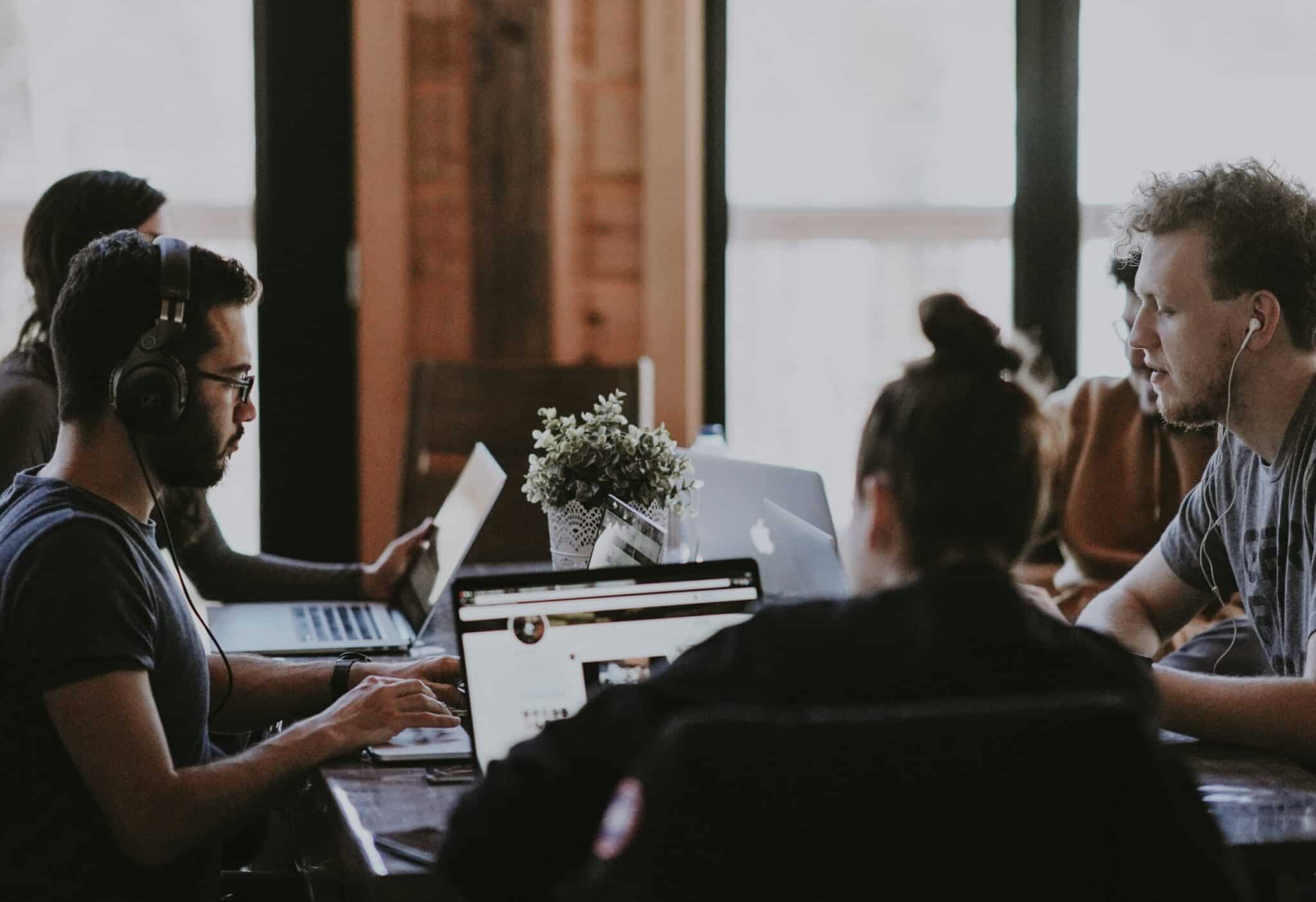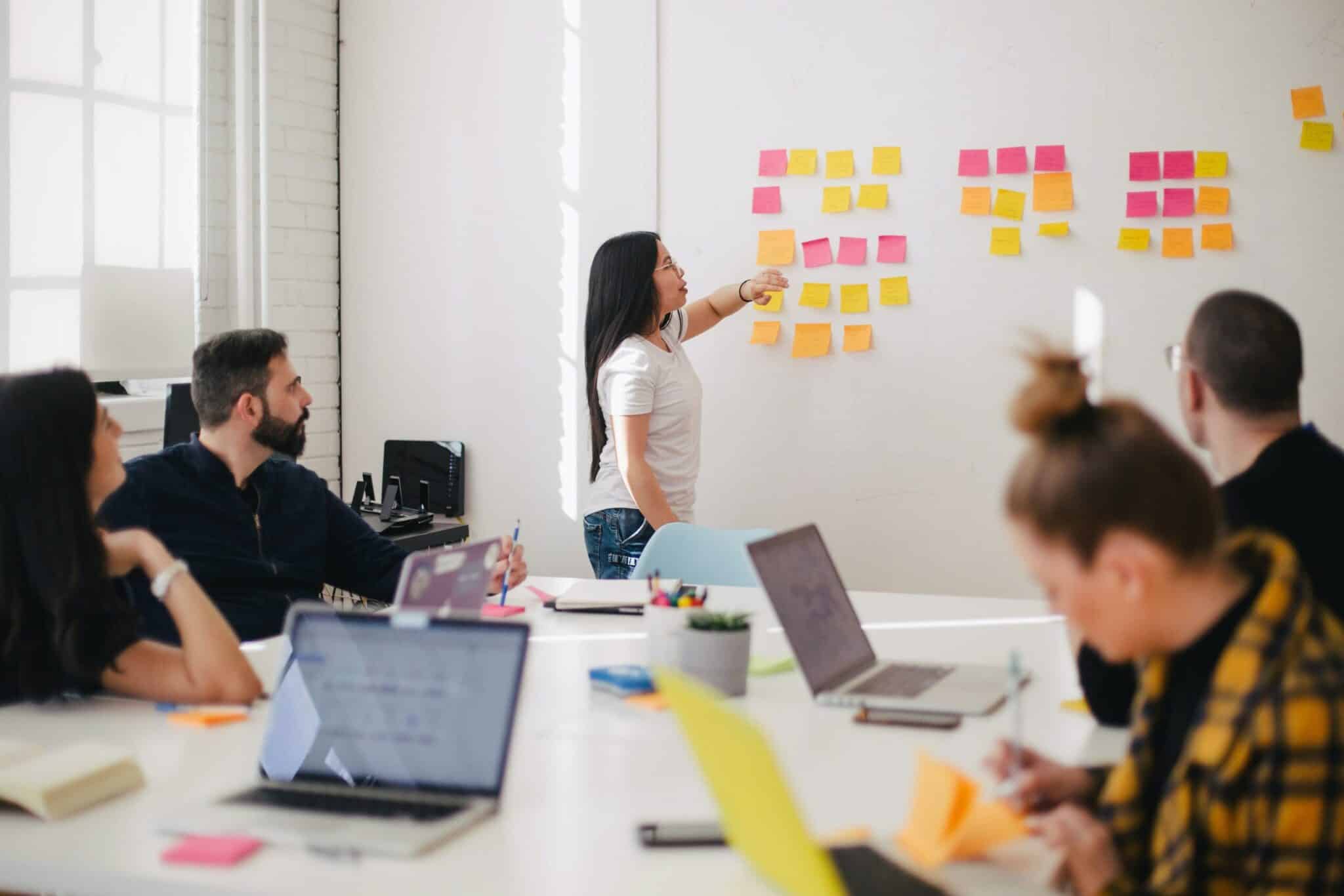Group dynamics are vital to success, and understanding how your group interacts and functions is essential.
Your team won’t reach its full potential if you don’t have the proper group dynamics. In the long run, this could cost you time, money, and resources.
Fortunately, there are ways to improve group dynamics and ensure your team is functioning at its peak performance.
I’ve worked with plenty of teams and have come to learn a few tricks for transforming group dynamics into something better.
Here’s a guide to help your team work together like a well-oiled machine!
What are Group Dynamics?
Group dynamics, at their core, are about the behavior of a group.
It’s about how individual members interact with each other, how decisions are made, and how to work together in harmony.
By understanding group dynamics, you can identify conflicts among team members and address them before they get out of hand.
You can also create an environment where everyone feels comfortable expressing their ideas and working together.
The importance of team collaboration cannot be overstated. A successful team dynamic can help your team reach its goals faster and more efficiently.
Here are some team building tips to help you get started.
What is Team Dynamics Theory?
Team dynamics theory is an approach to understanding and managing the behavior of groups as they work together.
It focuses on the following within a group or team setting:
- Roles
- Dynamics
- Relationships
- Communication patterns
In particular, it investigates how these elements can be managed to achieve effective collaboration between members.
Team dynamics theory looks at differences in power, status, gender, and other factors that may influence team performance.
It explores how social norms shape team behaviors, including those related to conflict resolution and decision-making.
For example, team dynamics theory can help groups identify potential sources of conflict and develop strategies to address them.
This approach aims to create an environment where individuals feel safe expressing their opinions openly and productively.
Team dynamics also looks at how members interact with each other and how their actions can support problem-solving and collaboration within teams.
What are the 5 Dynamics of an Effective Team?

The 5 dynamics of an effective team are:
- Psychological safety
- Dependability
- Structure & clarity
- Meaningful engagement
- Impactful leadership
We break each of these down in detail for you below.
Psychological Safety
Psychological safety is a critical element of effective team dynamics. It refers to team members’ confidence and trust in each other and their environment.
This sense of security allows people to do the following:
- Openly express their ideas
- Speak up without fear of being judged or ignored
- Take risks with new projects without worrying about repercussions from the rest of the team
People need to know that their contributions will be valued, appreciated, and recognized for psychological safety to exist.
This can be achieved through active listening, mutual respect and support, providing open feedback loops, creating an atmosphere where acceptable mistakes are encouraged as learning opportunities, and allowing everyone to participate equally in decision-making processes.
When psychological safety is present in a group setting, it fosters creativity, encourages collaboration, and creates an overall more productive work environment for all involved.
Dependability
One of the most important aspects of an effective team is dependability.
Dependability means that each team member can be counted on to do what they promised when they promised it.
This could include tasks related to the project, as well as showing up for meetings and responding in a timely manner.
Everyone should practice accountability by owning up to mistakes and taking responsibility for their own work, especially when it affects the group’s performance overall.
Having dependable team members not only helps build trust among teammates but also strengthens faith in the team from others outside of the group, such as management or clients.
With consistent reliability, a project will progress more smoothly with minimal disruption, allowing teams to have greater trust and confidence in one another.
To ensure dependability within a team culture, each individual should strive to talk openly about any issues they may have and make agreements that are realistic and achievable.
They should also be clear with communication so there is no confusion between tasks assigned or due dates set. Lastly, teams should have regular check-ins and progress reviews so everyone is always on the same page regarding deadlines and expectations.
By implementing these practices into a team environment, everyone can trust one another more confidently and produce better results over time.
Structure & Clarity
Having a clear structure and understanding of roles within the team is essential for effective group dynamics.
Defining the following can help keep everyone accountable and on track throughout the project:
- Timeline
- Individual duties
- Expectations
- Deadlines
It’s essential to have clear goals established before beginning any task so that all members are aware of what needs to be accomplished.
Having a structured plan in place also helps eliminate any confusion among teammates about how to approach certain tasks or where their responsibilities fit into the overall project scope.
When defining job roles, it’s beneficial to allow everyone an opportunity to be heard, as different team members may have unique perspectives or ideas that could greatly benefit the project.
Meaningful Engagement
It’s important to provide meaningful engagement opportunities to keep the team spirit alive.
This could be something as simple as sharing successes or accomplishments from recent projects at a mid-week meeting.
It could also mean having regular exercises that encourage collaboration, such as brainstorming ideas for upcoming tasks together.
Having open and honest conversations about any issues that may have arisen during the project is important as well. This can help everyone stay on track and recognize areas of improvement within their own work.
When team members feel valued and appreciated for their contributions, they are more likely to remain engaged in the project, which ultimately leads to better results overall.
Impactful Leadership
Strong leadership is a key component of successful group dynamics.
Leaders should take the initiative when it comes to setting the tone and direction for their team while also providing support and guidance as needed.
Leaders should strive to encourage open communication among team members, provide feedback on tasks in an organized manner, and create a safe space for everyone to express their opinions without fear of judgment.
The leader’s main objective should be to foster an environment that allows each individual to work collaboratively together toward achieving common goals without feeling overwhelmed or uncertain about the project’s outcome.
What’s the Importance of Team Dynamics?
A strong team dynamic creates an atmosphere of trust, respect, and support amongst all members, which leads to greater productivity and better-quality results.
It also helps foster a sense of camaraderie amongst teammates, as well as helps to build stronger relationships that can last long beyond the project’s completion.
Here are some of the specific benefits:
- Boosts performance
- Better creativity
- Better productivity and effectiveness
Boosts Performance
One of the most significant benefits of good team dynamics is that it noticeably boosts performance.
When team members feel at ease, accepted, and clearly understand their roles and tasks, they can work together efficiently and productively.
The synergy created by cohesive teams enables them to reach goals faster than separate individuals could on their own.
Better Creativity
Successful team dynamics can lead to better creativity and innovation in the workplace.
When a team works together, members are able to draw from each other’s unique experiences and expertise, allowing them to come up with creative solutions to even the most challenging of problems.
Working as a group also encourages open-mindedness since no one individual holds all the answers.
Better Productivity and Effectiveness
Good team dynamics can also lead to improved productivity and effectiveness.
When everyone works together, tasks are completed faster and with better results. This is due to the fact that multiple perspectives can be combined to create more optimal solutions than if only one person was working on it.
Additionally, when team members feel accepted and appreciated for their contributions, they will naturally be more driven to put in their best effort.
What Causes Poor Group Dynamics?
Having a deep understanding of why some teams don’t work as well together is important.
Some factors that can cause poor group dynamics are:
- Weak leadership
- Blocking
- Excessive deference to authority
- Groupthink
- Free riding
- Evaluation apprehension
Weak Leadership
Weak leadership is one of the most common causes of poor group dynamics. When there is a lack of solid direction coming from the leader, it can create confusion and chaos within the group.
Members find themselves vying for power or trying to take control, which leads to fighting and disagreements among members.
Without clear boundaries, guidance, and expectations being set by the leader, it can lead to a breakdown in communication where members don’t know how to move forward in unison.
In addition, any successes or difficulties encountered are not adequately acknowledged or addressed by the team due to an absent leader with no authority or influence over the group.
Blocking
Blocking can be a major issue when it comes to group dynamics.
It occurs when one or more members of the team prevent progress from being made on tasks by voicing their own opinions without listening to others or taking into account everyone’s input.
When this happens, it creates a negative environment where other members don’t feel valued, and productive conversations are stalled.
This ultimately leads to disagreements and wasted time that could have been spent getting things done instead.
Excessive Deference to Authority
When there is excessive deference given to authority figures or those with higher positions within the group, it can lead to a loss of motivation and creativity among all members involved.
This happens because the power dynamics become uneven, leading to members not taking the initiative or feeling like their opinions don’t matter.
Groupthink
Groupthink is another common problem when it comes to group dynamics.
This is when team members all think in the same way, and there is an over-reliance on each other’s ideas rather than individual creativity.
This can cause stagnation, a lack of innovation within the group, and a fear of speaking up for fear of criticism from others.
It also leads to members becoming too comfortable with each other and being unwilling to challenge each other which can be detrimental in the long run.
Free Riding
Another issue that can arise from poor group dynamics is free riding.
This occurs when one or more team members avoid contributing their fair share to tasks or decisions, leaving the rest of the group to pick up the slack.
This creates a sense of unfairness and resentment within the team that can lead to feelings of:
- Burnout
- Frustration
- Ultimately a breakdown in communication and dynamics
Evaluation Apprehension
Finally, evaluation apprehension can also be an issue regarding group dynamics.
Evaluation apprehension refers to when members are afraid to speak up or express their ideas due to fear of being judged by others.
This leads to a lack of creativity and innovation and problems with trust between members, which can lead to further issues with communication and progress within the team.
How Do Leaders Improve Team Dynamics?

There are plenty of ways to improve team dynamics as a leader.
One way to improve group dynamics could be to hire an executive coaching company.
They can help create a better team dynamic by facilitating clear communication and problem-solving tactics that all team members can get behind.
Here are 6 additional steps to help you get started:
- Define roles and responsibilities
- Create team guidelines
- Don’t let problems go unchecked
- Break down team obstacles
- Have great communication
- Pay attention
Step 1: Define Roles and Responsibilities
The very first step to improving group dynamics is to make sure that everyone has a clear understanding of their roles and responsibilities.
This will help foster an environment where team members are held accountable for their actions and can help prevent any misunderstandings or conflicts from arising in the future.
Step 2: Create Team Guidelines
Creating a set of guidelines or standards that all members should adhere to is another great way to improve group dynamics.
These guidelines should be tailored to each team’s specific needs, but they should generally cover topics such as:
- Respect
- Communication
- Problem-solving
- Accountability
Step 3: Don’t Let Problems Go Unchecked
It’s important not to let any issues or problems go unchecked.
If a team member is underperforming, or there is an issue between two members, it’s important to address the issue head-on and devise a solution that works for everyone.
If you don’t address the issue, it can lead to further problems and conflicts down the line.
Step 4: Break Down Team Obstacles
Another step to improving group dynamics is to break down any obstacles preventing progress.
This can include anything from poor communication habits to conflicts of interest within the team.
By identifying these obstacles early on, teams can work together more effectively and efficiently in the long run.
Step 5: Have Great Communication
Strong communication is key when it comes to improving group dynamics.
Leaders must ensure everyone is on the same page and that all team members know their roles and responsibilities.
This can be done through regular meetings, one-on-one conversations, or even group activities.
Step 6: Pay Attention
Finally, leaders need to pay close attention to how their team interacts with each other.
By paying attention to nonverbal cues such as body language and listening closely to what is being said, leaders can identify any potential issues before they become problems that could disrupt the team dynamics.
Wrap Up
Understanding and addressing the common causes of poor group dynamics is key to improving team collaboration.
By following these tips for improving group dynamics, you’ll be well on your way to creating an effective and productive working environment!
Do you have any questions about group dynamics? Let us know in the comments below!


